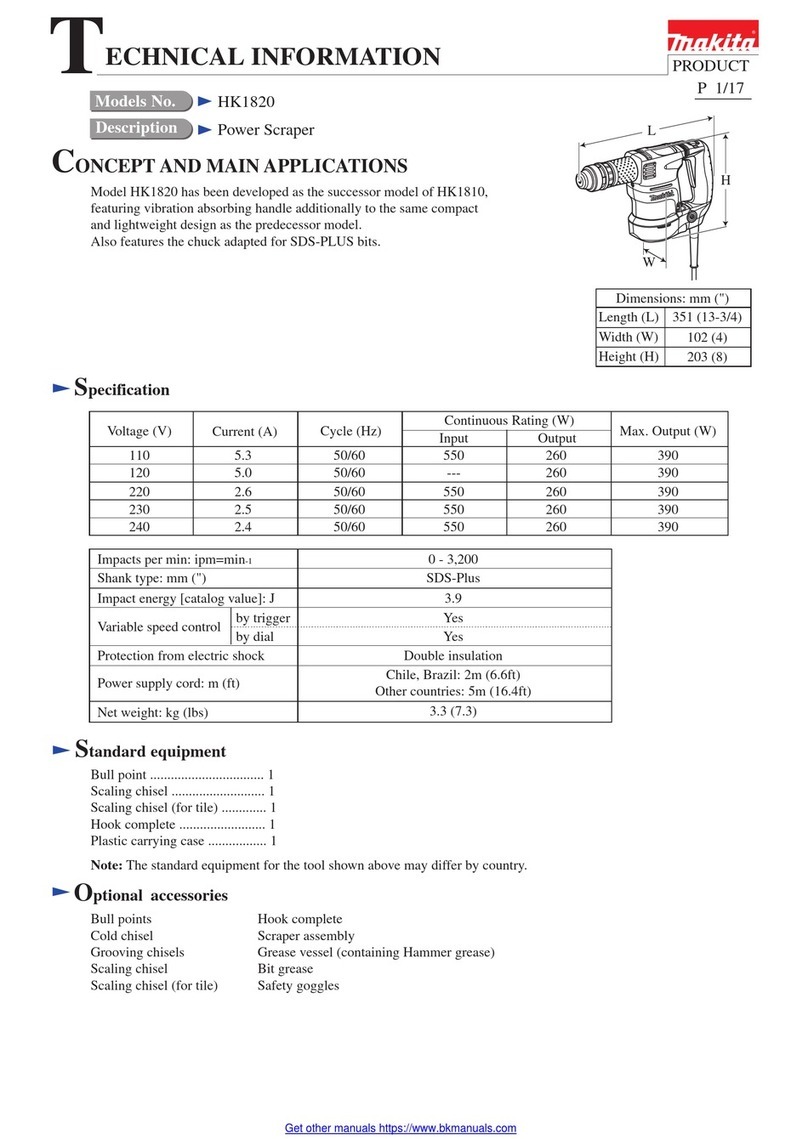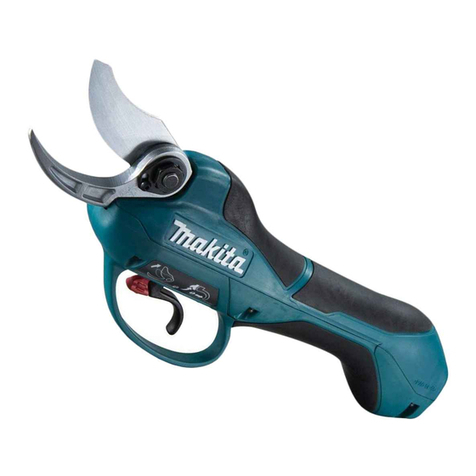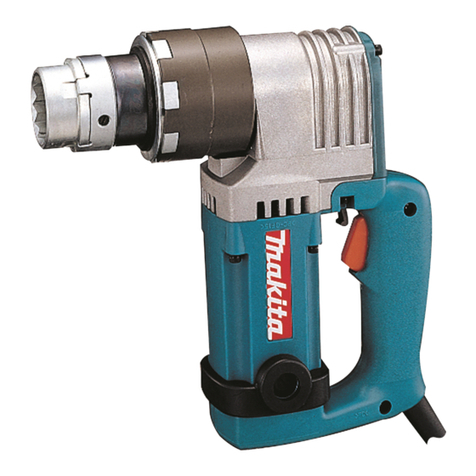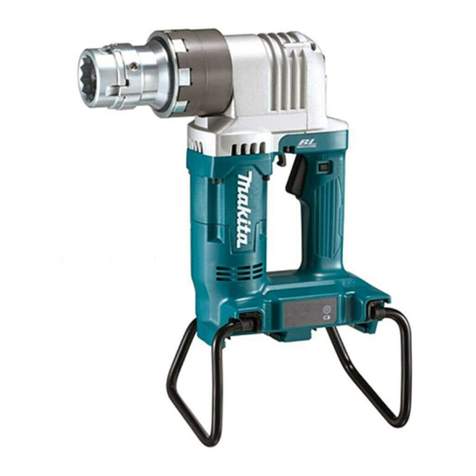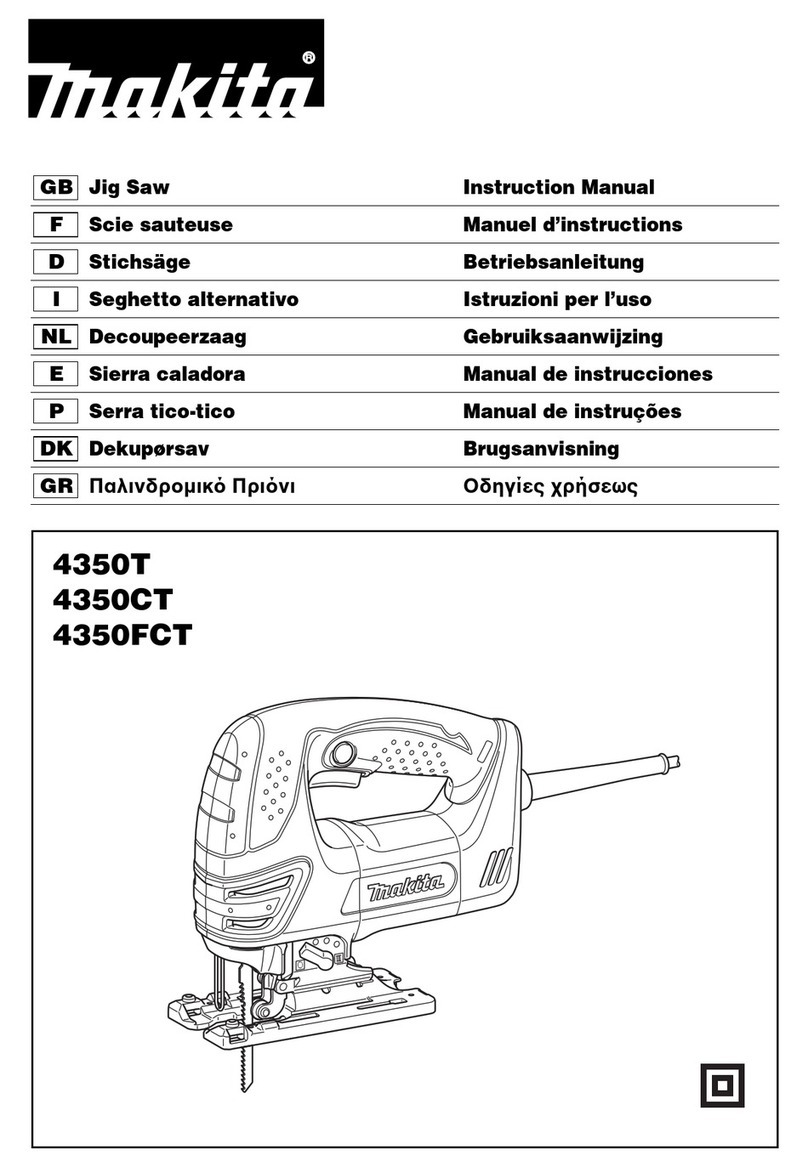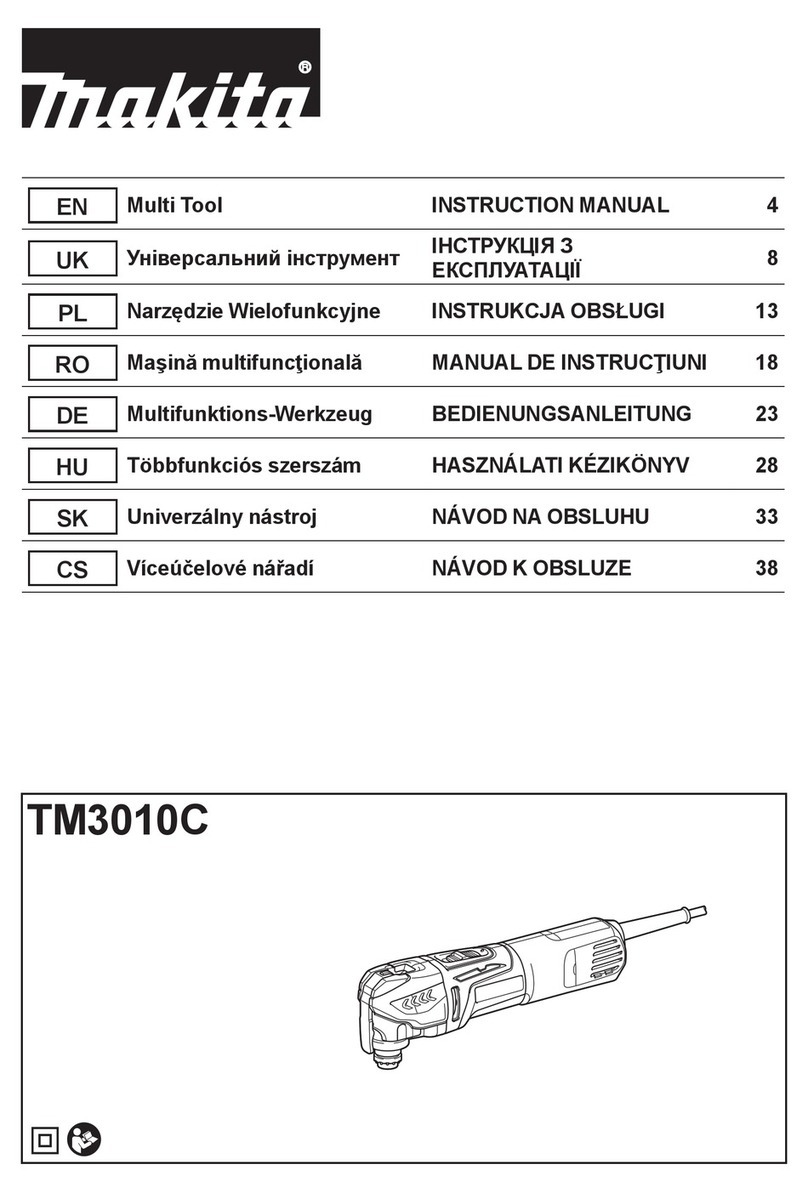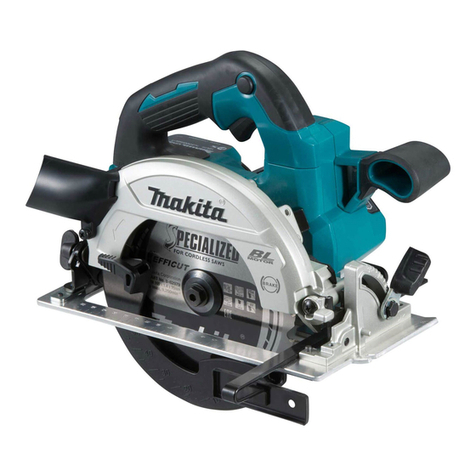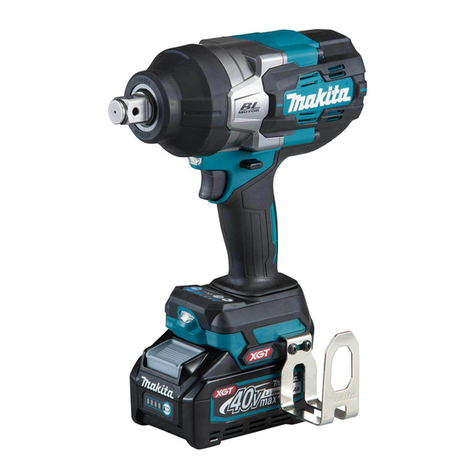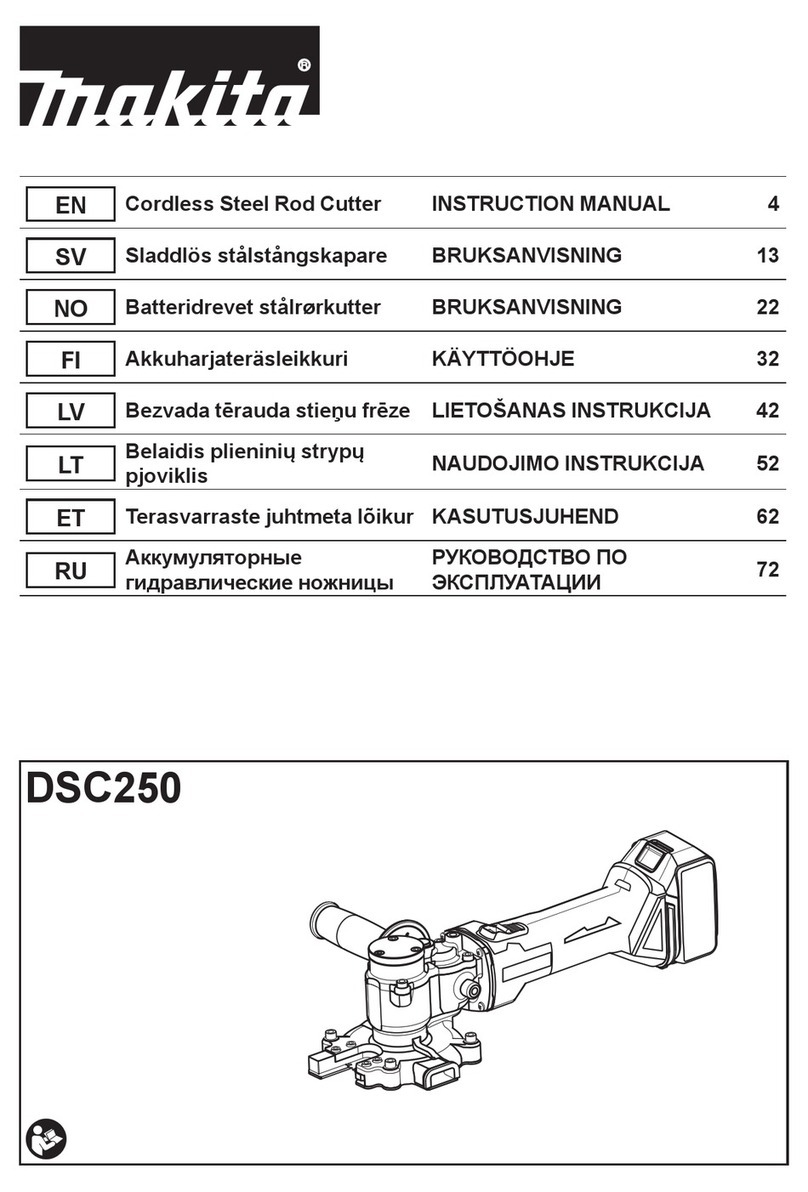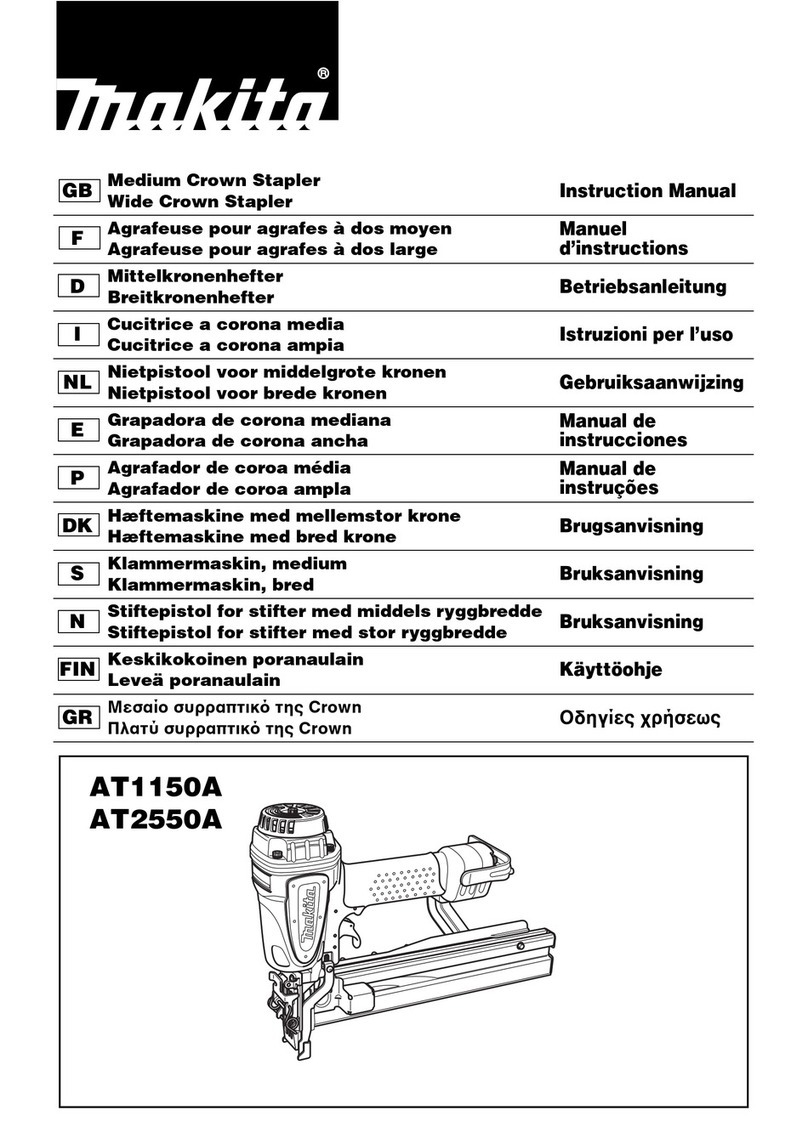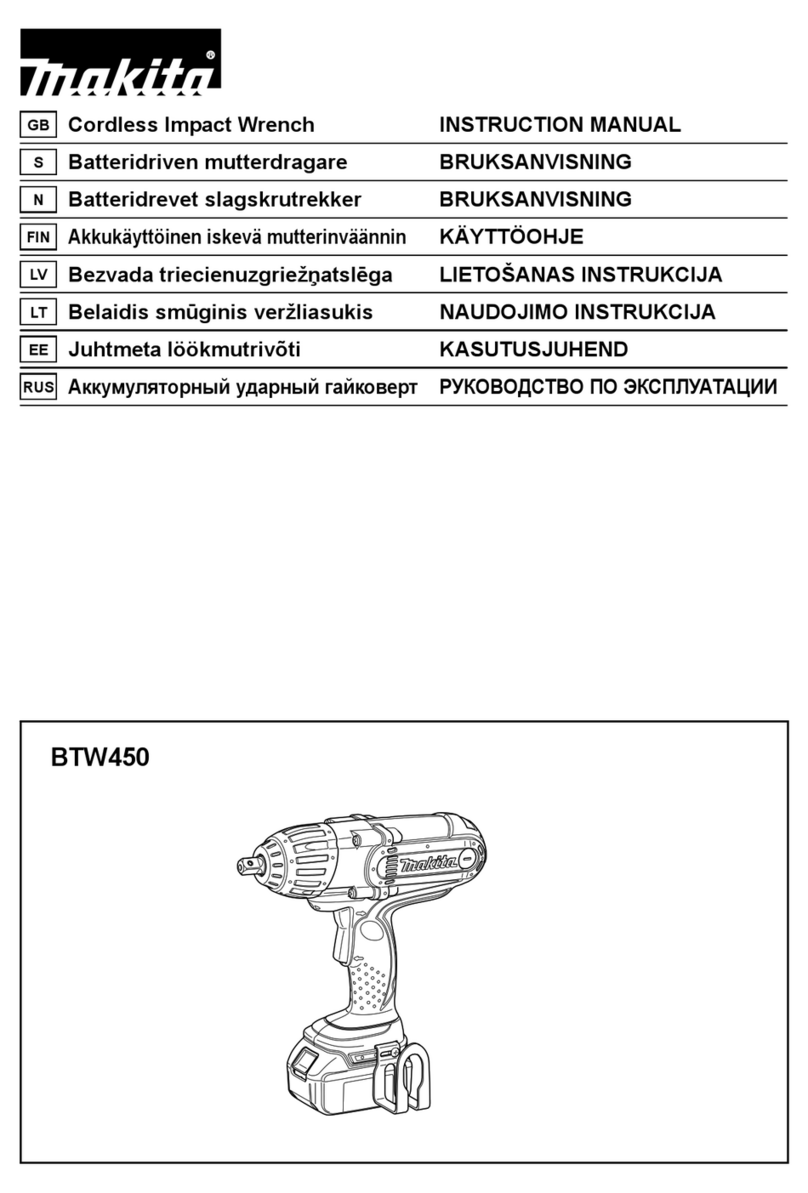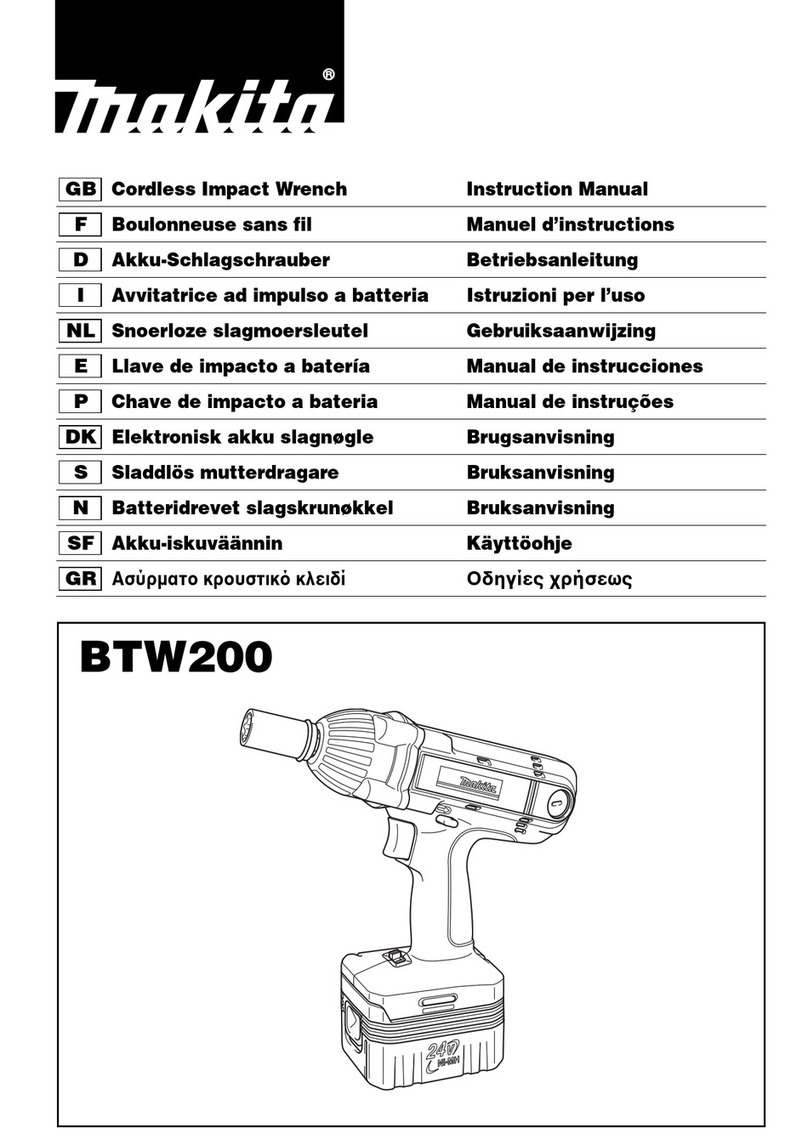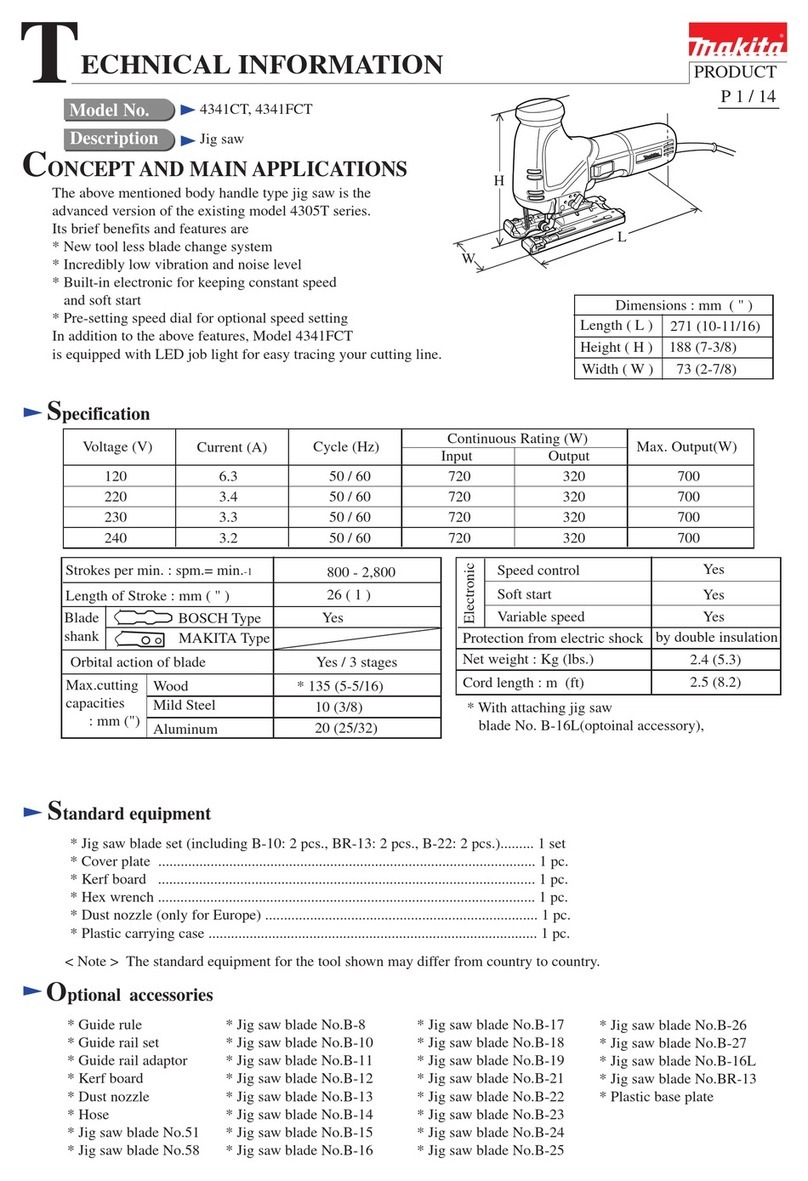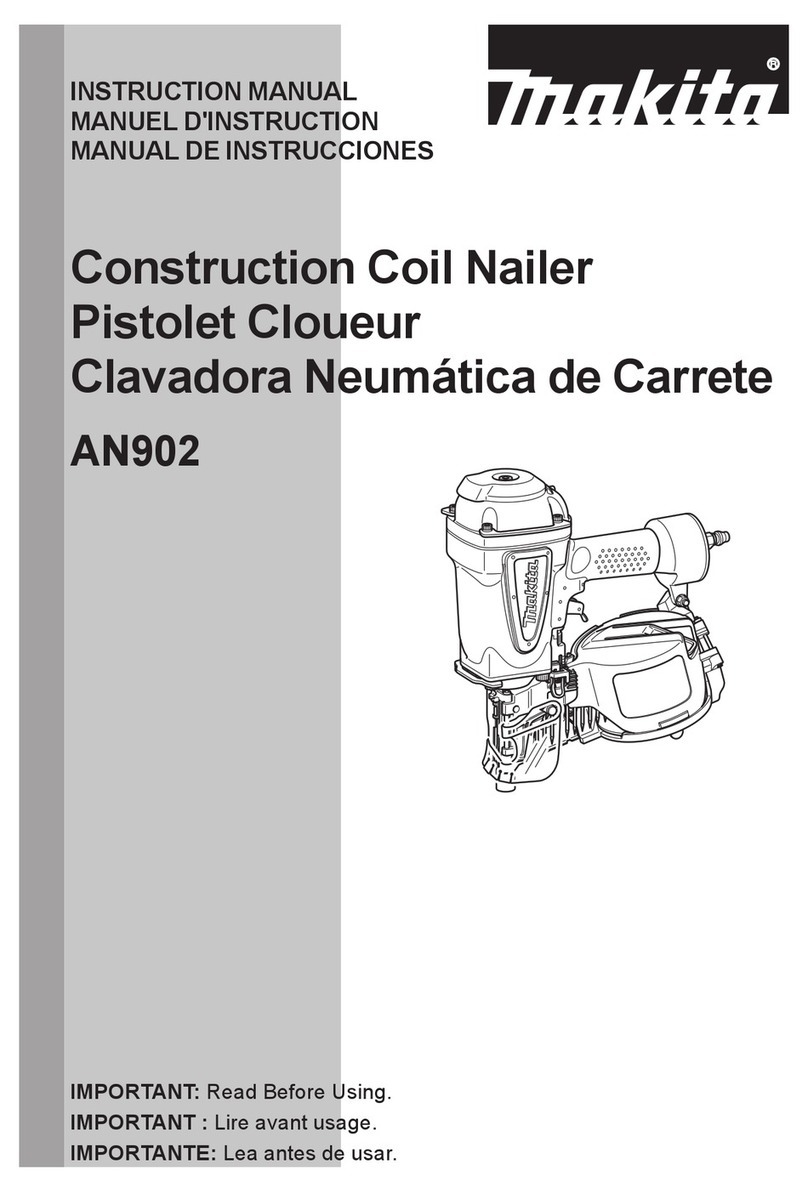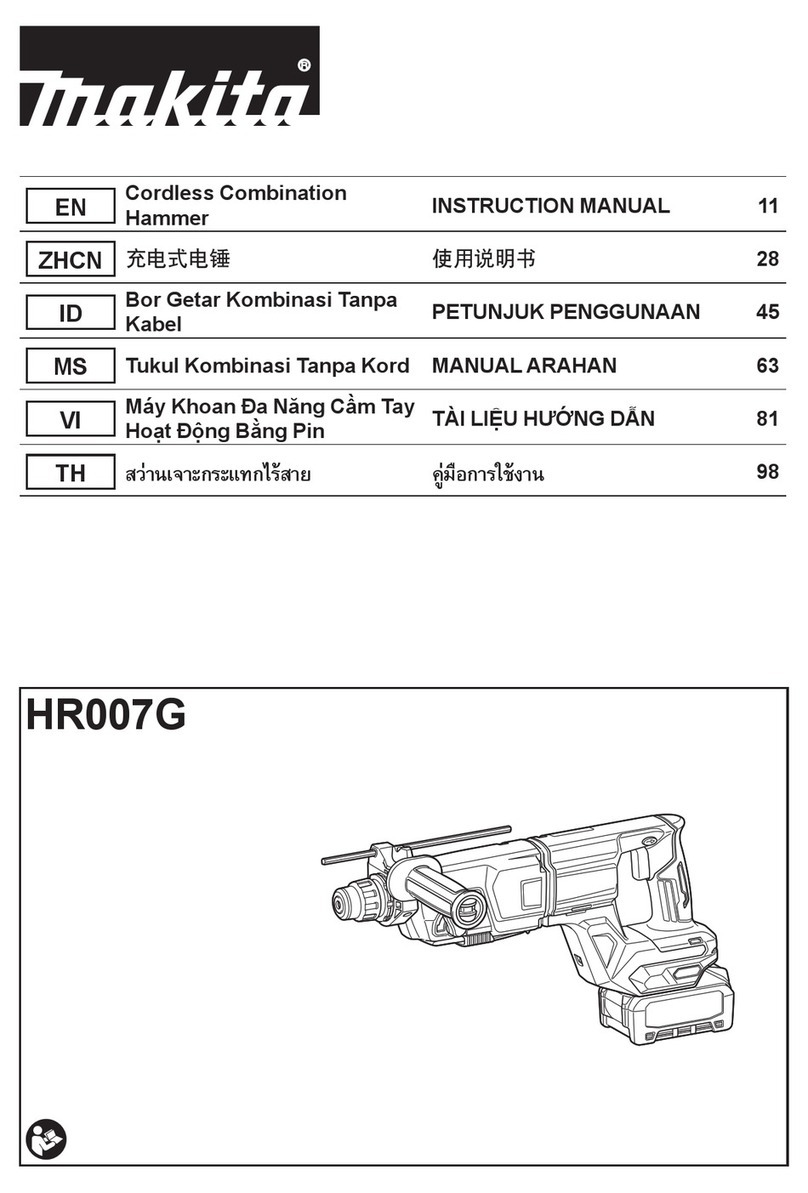4ENGLISH
6. Keep cutting tools sharp and clean.Properly
maintained cutting tools with sharp cutting edges
are less likely to bind and are easier to control.
7. Use the power tool, accessories and tool bits
etc. in accordance with these instructions, tak-
ing into account the working conditions and
the work to be performed. Use of the power tool
for operations different from those intended could
result in a hazardous situation.
8.
Keep handles and grasping surfaces dry, clean
and free from oil and grease.Slipperyhandlesand
grasping surfaces do not allow for safe handling and
control of the tool in unexpected situations.
9. When using the tool, do not wear cloth work
gloves which may be entangled. The entangle-
ment of cloth work gloves in the moving parts may
resultinpersonalinjury.
BATTERY tool use and care
1. Recharge only with the charger specied by
the manufacturer. A charger that is suitable for
onetypeofBATTERYpackmaycreateariskof
rewhenusedwithanotherBATTERYpack.
2.
Use power tools only with specically desig-
nated BATTERY packs.UseofanyotherBATTERY
packsmaycreateariskofinjuryandre.
3.
When BATTERY pack is not in use, keep it away
from other metal objects, like paper clips, coins,
keys, nails, screws or other small metal objects,
that can make a connection from one terminal to
another.ShortingtheBATTERYterminalstogether
maycauseburnsorare.
4. Under abusive conditions, liquid may be
ejected from the BATTERY; avoid contact. If
contact accidentally occurs, ush with water.
If liquid contacts eyes, additionally seek med-
ical help.LiquidejectedfromtheBATTERYmay
cause irritation or burns.
5. Do not use a BATTERY pack or tool that is
damaged or modied.Damagedormodied
batteries may exhibit unpredictable behaviour
resultinginre,EXPLOSIONorriskofinjury.
6. Do not expose a BATTERY pack or tool to re
or excessive temperature.Exposuretoreor
temperature above 130 °C may cause explosion.
7. Follow all charging instructions and do not
charge the BATTERY pack or tool outside the
temperature range specied in the instruc-
tions. Charging improperly or at temperatures
outsidethespeciedrangemaydamagethe
BATTERYandincreasetheriskofre.
Service
1. Have your power tool serviced by a qualied
repair person using only identical replacement
parts. This will ensure that the safety of the power
tool is maintained.
2. Never service damaged BATTERY packs.
ServiceofBATTERYpacksshouldonlybeper-
formed by the manufacturer or authorized service
providers.
3. Follow instruction for lubricating and chang-
ing accessories.
4. Do not modify or attempt to repair the appli-
ance or the BATTERY pack except as indicated
in the instructions for use and care.
Cordless rebar tying tool safety warnings
1.
Never point the tool toward a person. Never put
your hands or feet close to the tool tip. If you
accidentally operate the tool while it is touching
someone,itwillleadtoanunexpectedaccident.
2. Do not load wire while the power to the tool is
turned on.Otherwise,youmaygetcaughtinthe
wireandinjured.
3. Do not use the tool without closing the reel
cover.Otherwise,thewirereelmaycomeoffand
cause an accident.
4. Be sure to check that the diameters of rebars
to be tied are within the tool capacity before
beginning work.
5.
Wear clothes that have close-tting hemlines and
sleeves. Do not work with a towel or other object
wrapped around your neck.Otherwise,theymay
get caught in the rotating part and cause an accident.
6. Be sure to inspect the following points before
using the tool.
• Check that no parts are damaged
• Check that no bolts are loose
• Check that safety devices operate
normally
7. If any abnormalities are found, stop using the
tool immediately. Do not repair the tool by
yourself. Ask your local Makita Service Center
for repairs. If the tool is used in an incomplete
state,anaccidentmayoccur.
8.
When installing the battery cartridge, be sure to
lock the trigger and do not place your nger on the
trigger. Incorrect operation may cause an accident.
9.
When tying rebars, exercise care not to move
them.Ifrebarsmoveduetotying,youmaybeinjured.
10. Do not touch the wires during the wire tying
process.Otherwise,youmaygetcaughtinthe
wireandinjured.
11. Do not bring your hands close to the tying
point during the wire tying process.Otherwise,
youmaygetcaughtinthewireandinjured.
12. Hold the grip of the tool rmly during the wire
tying process.Otherwise,yourwristmaybe
twistedoryourbodymaybepulled,whichmay
resultinaninjury.
13. Do not move to the next tying point until the
current wire tying process is completed.
Otherwise,youmaybeinjured.
14.
Pay attention to the end of the wire during the wire
tying process.Otherwise,yourhandmaybecaught
bytheendofthewire,andyoumaybeinjured.
15. Do not touch the contact plate during the wire
tying process. If you need to touch the contact
plate, be sure to lock the trigger, or turn the
power switch off and remove the battery car-
tridge.Otherwise,youmaybeinjured.
16.
When you have completed the wire tying process,
pull the tool up vertically.Otherwise,thearmmay
becaughtonrebars,whichmaycauseanaccident.
17.
Be careful not to drop, bump, or hit the tool. If a
strong impact is applied prior to the tool being
used, make sure that the tool is not damaged
or cracked, and that the safety devices operate
normally.Otherwise,anaccidentmayoccur.
